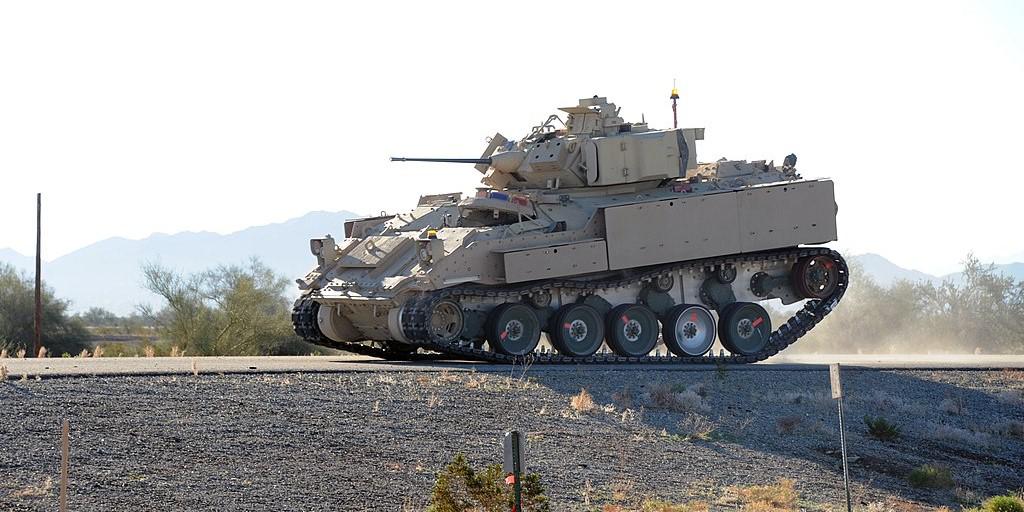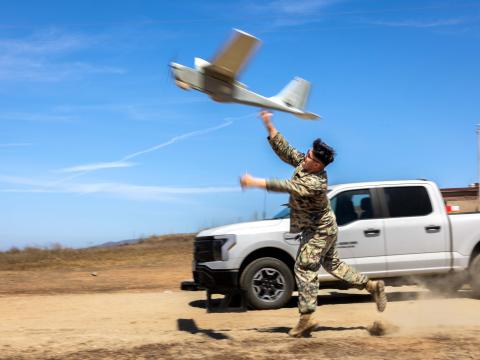Army Provides Details on Reduced RDT&E Budget
In a March 29 telephonic roundtable discussion with reporters, U.S. Army officials provided additional details about the service’s technology priorities in the 2023 budget request that reduces research, development, test and evaluation (RDT&E) dollars by 5.5 percent from 2022.
The Army released its $178 billion budget request Monday. The overall request includes a modest increase of $2.8 billion over the 2022 appropriations and balances current readiness and the continued transformation toward the Army of 2030 as the service strategically pivots from two decades of focus on counterterrorism to an Army ready to meet the challenges posed by more sophisticated adversaries, such as Russia and China, Army officials say.
The fiscal 2023 procurement and research, development, test and evaluation request is less than previous enacted levels but emphasizes the Army’s six modernization priorities—long-range precision fires, next-generation combat vehicle, future vertical lift, network, air and missile defense, and soldier lethality—that are critical to maintaining a competitive edge, and supports the organic industrial base, according to an Army press release. Further, the request transforms the Army through integration of next-generation technology to deter adversaries and win on multidomain battlefields, the press release states.
Among other priorities, the budget request funds prototyping of Long-Range Hypersonic Missile, Mid-Range Capability Missile flight tests and Precision Strike Missile and continues development of Lower Tier Air and Missile Defense and maintains the pace of Project Convergence to test new operational concepts and digital technology, according to briefing slides provided to reporters. It also begins procurement of the Tactical Intelligence Target Access Node, an intelligence ground station powered by artificial intelligence and machine learning, which is considered a critical link to allow long-range precision fires.
The media roundtable revealed that Army’s share of the Pacific Deterrence Initiative budget request is about $1.4 billion. The budget request also includes $4.2 billion for the European Deterrence Initiative to deter Russian aggression. The money funds a Mission Partner Environment Network to securely communicate with partners countries in the region, as well as a third multidomain task force.
The multidomain task forces conduct full-spectrum operations, including electronic warfare and cyber operations. Army officials have not yet decided where the third task force will be located.
The RDT&E funding request provides $590 million for up to three companies to build prototypes of the Optionally Manned Fighting Vehicle, which is one part of the Next Generation Combat Vehicle program and is designed to replace the M-2 Bradley Fighting Vehicle.
Regarding the Remote Controlled Vehicle-Light and -Medium programs, the Army is “continuing to push ahead on our robotic vehicles and some of the [science and technology] work there in development,” Brig. Gen. Michael "Mac" McCurry, USA, the Army’s force development director, said during the roundtable. "Across the Army equipment portfolio, we balanced pretty significantly between continuing the momentum on modernization and targeted upgrades on our enduring equipment overall. That was our strategy going forward.”
The Army is transitioning three programs—sniper rifle modifications, PVS-14 night vision modifications and medium tactical vehicle protection kits—from research and development to sustainment for a total savings of $23 million and reduced funding for 32 programs, including Abrams and Stryker vehicles, effectively slowing down those procurement efforts for additional savings. The Joint Light Tactical Vehicle, on the other hand, receives an increase of $128.6 million to procure 1,532 trucks and 1,410 trailers. The service also increased Joint Light Tactical Vehicle RDT&E funding $6.8 million for improvements such as greater fuel efficiency.
Army officials also highlighted the importance of the Terrestrial Layer System, a ground vehicle-based integrated electronic warfare and signal intelligence system. “This is all designed to help us get after large-scale combat against near peers operating across the electronic spectrum. The integrated suite of sensors helps us address the threat signals and provides electronic attack capabilities on tactical wheeled vehicles on the battlefield,” Gen. McCurry said.




Comments